This gochujang pasta is a harmonious marriage of East meets West in every bite. It’s a delightful combination of the iconic Korean gochujang paste with the roasted tomatoes which makes it irresistibly comforting.
I’ve been so obsessed with this roasted tomato gochujang shrimp pasta lately because it’s packed with so much flavor. The best part is, you don’t even need cream for this dish! This pasta recipe has been on rotation every week and has quickly become my new favorite way to enjoy pasta. So if you’re looking for a new quick and easy pasta recipe, I urge you to give this a try! 🙂
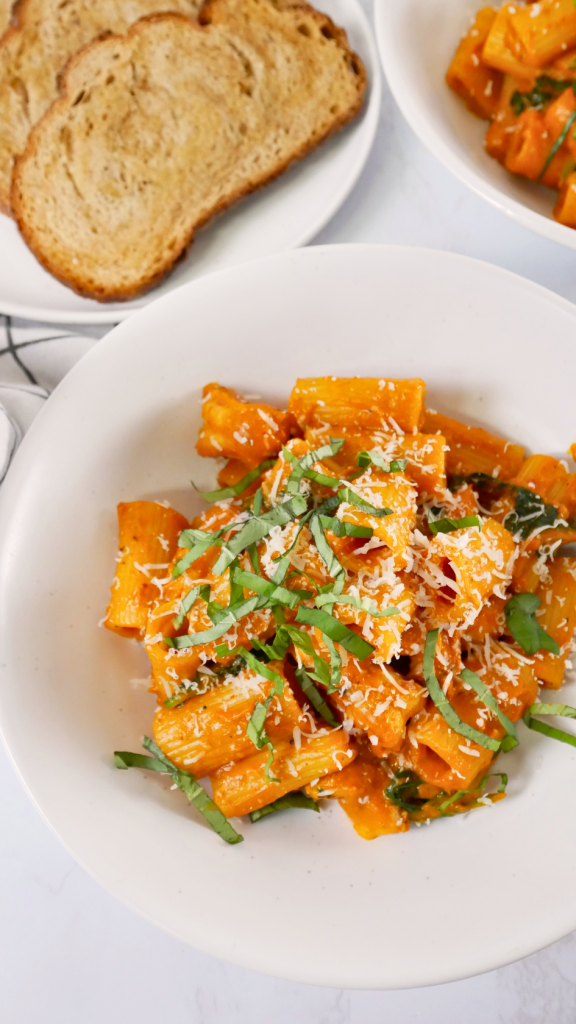
Why you’ll love this recipe
If you’re craving a new pasta recipe or want to elevate your pasta nights, this gochujang pasta recipe is the one. The gochujang adds a sweet, savory, and spicy flavor profile and when combined with the delicious roasted tomatoes and aromatics, the result is an explosion of flavors in your mouth. Now, when you add shrimp to the dish, you get a complete drool-worthy meal. Once you have a taste of this, you’ll wonder why you haven’t added gochujang to your pasta!
What I love the most about this recipe is how guilt-free it is. Most gochujang pasta recipes I’ve seen always incorporate heavy cream in the sauce but with this recipe, it won’t be missed at all. It’s a great healthy alternative to the typical heavy pasta dishes, without sacrificing any flavor.

Ingredients & Substitutions
Cherry or grape tomatoes: the tomatoes are the base of the sauce so you want to use the fresh tomatoes you can find. You can also substitute them with bigger tomatoes like Roma or campari tomatoes however you will need to roast them for longer.
Garlic: garlic cloves will add delicious garlicky flavor and aroma to the sauce.
Chili pepper: roasting the chili peppers will help bring out their natural sweetness and add spiciness to the sauce. You can use any of your favorite chili peppers, including jalapeno or serrano peppers.
Olive oil: olive oil is used to flavor and coat the vegetables when roasting. It also allows the salt and pepper to adhere to the vegetables.
Salt: the salt is used to season the vegetables and shrimp.
Black pepper: just a pinch is all you need!
Gochujang: gochujang is the main flavor component of the sauce. Gochujang comes in different spice levels which are usually mild, hot, and very hot. I typically use mild because it acts as a good foundation and will add peppers or spices to increase the spice level.
Sugar: the sugar helps to balance out the tartness of the tomatoes. You can use any type of sugar – white, light brown, or dark brown!
Cooked pasta: I’m using rigatoni pasta for this recipe, but you can also use other types of pasta you like including penne, ziti, spaghetti, or fettuccine.
Spinach: using spinach is a sneaky way of adding veggies to the dish, but you can also swap it with any of your preferred leafy greens, including kale, watercress, or arugula.
Basil: garnishing the dish with fresh basil will add that final touch to the dish.
Grated parmesan cheese: grated parmesan cheese on top of the pasta will add flavor and creaminess.
Shrimp Marinade Ingredients & Substitutions
Shrimp: shrimp is the main protein in this dish however, you can use any other seafood that you like including squid, scallops, or octopus.
Olive oil: the olive oil will help the spices adhere to the shrimp.
Salt: salt is used to season the shrimp.
Gochugaru (Korean red pepper flakes): the gochugaru is added for a subtle hint of spice.
Onion powder: the onion powder adds an onion flavor to the shrimp.
Garlic powder: garlic powder will add a garlicky flavor and aroma to the shrimp, but you can also replace it with fresh minced garlic for a more potent flavor.
Black pepper: the black pepper adds a subtle kick of pepperiness. Just a pinch is all you need!
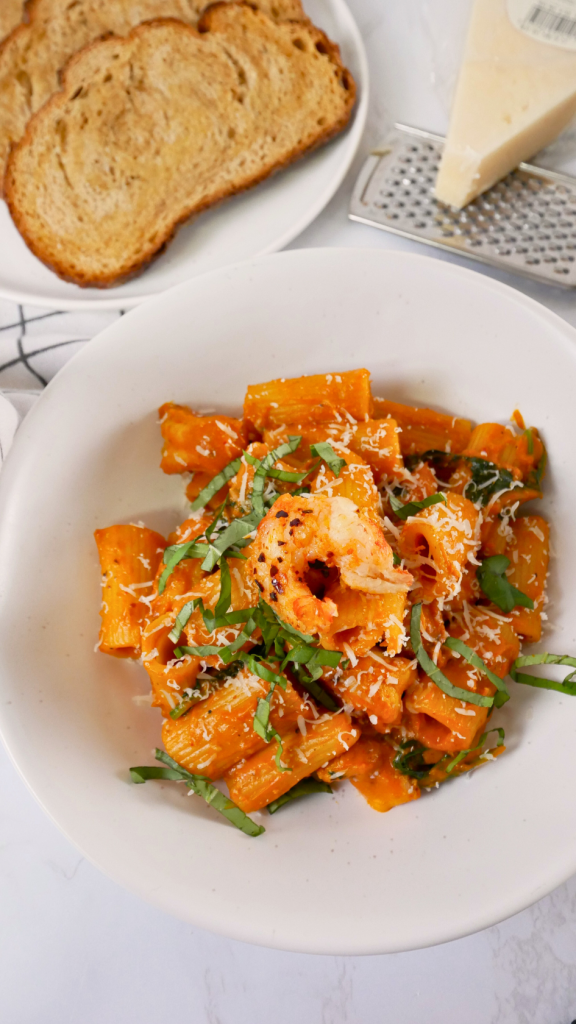
How do I prepare Gochujang Pasta?
For this recipe, you’ll have to make the tomato sauce from scratch. But it will all be worth it once you have a taste of the pasta. To start, just follow the steps below:
Step 1: Roast the tomatoes
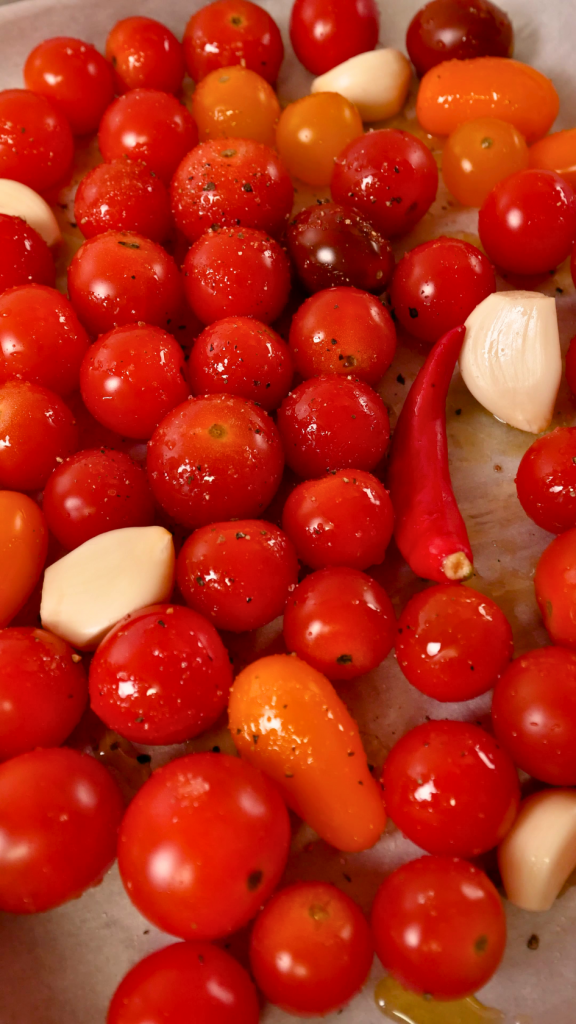
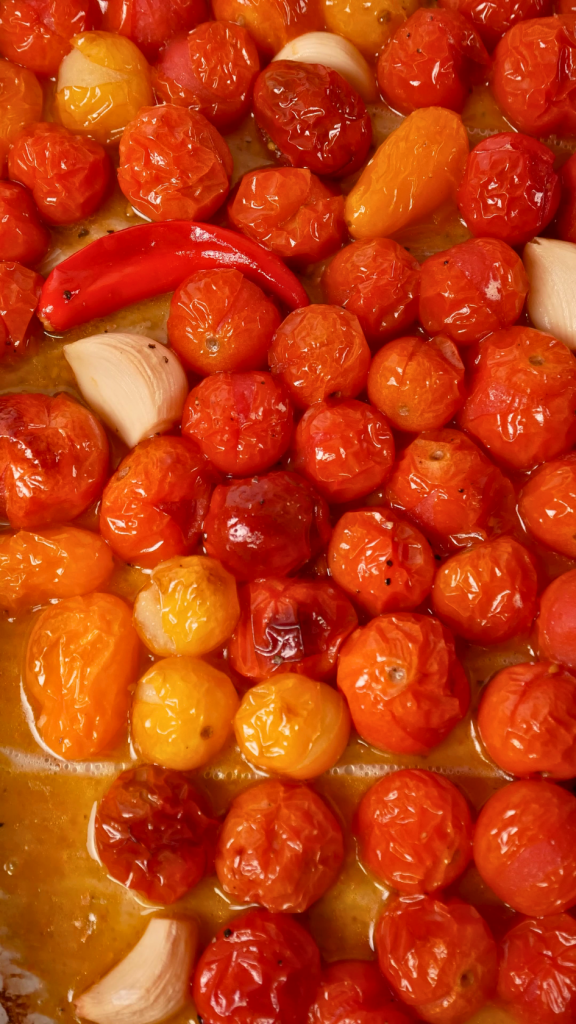
Preheat your oven to 450°F (230°C). In a sheet tray, toss the tomatoes, garlic, and chili pepper with olive oil, salt, and pepper. Then, roast in the oven for 30 minutes or until the tomatoes blister and soften.
Step 2: Prepare the shrimp
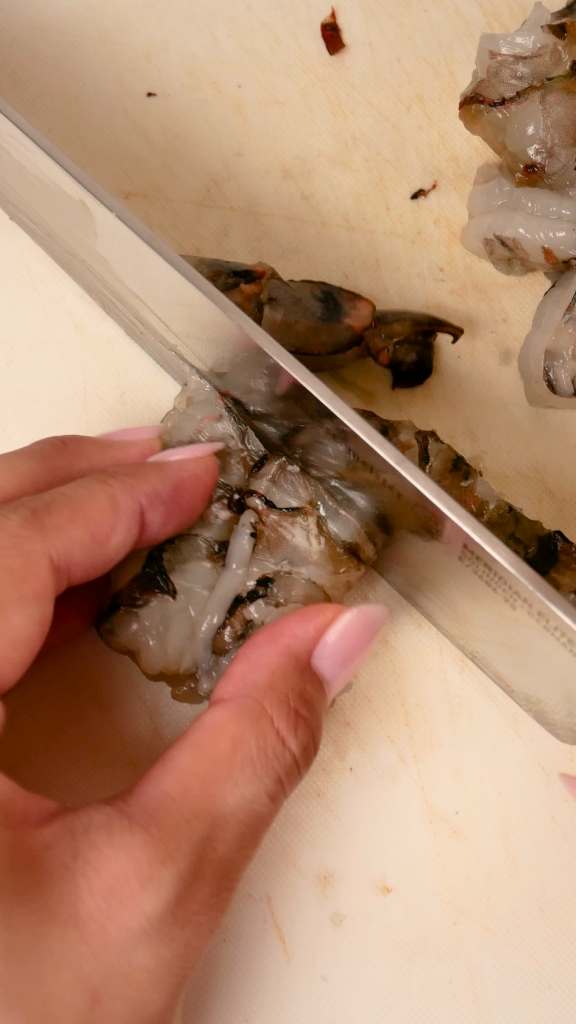
While the tomatoes are roasting, prep the shrimp by peeling and deveining them. If you have big sizes, cut them into smaller chunks.
Step 3: Season the shrimp
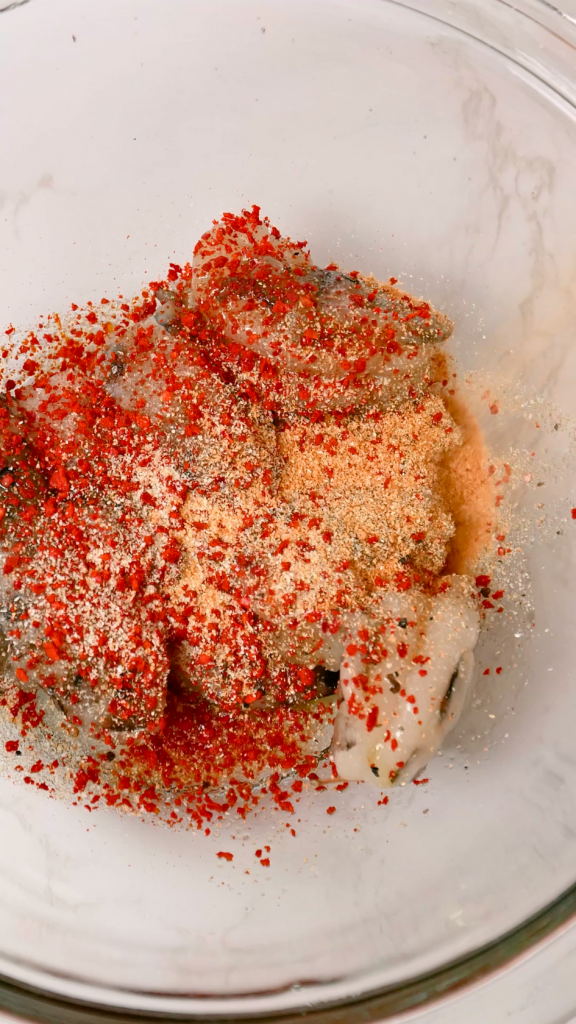
Season the shrimp with the marinade which includes olive oil, salt, gochugaru, onion powder, garlic powder, and ground black pepper. Mix them together and set them aside.
Step 4: Blend the roasted tomatoes
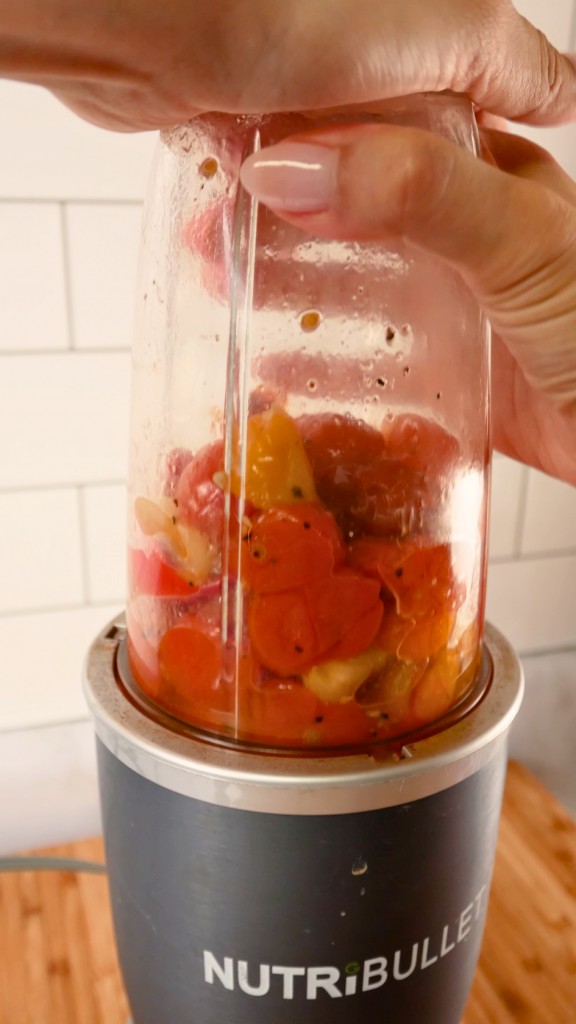
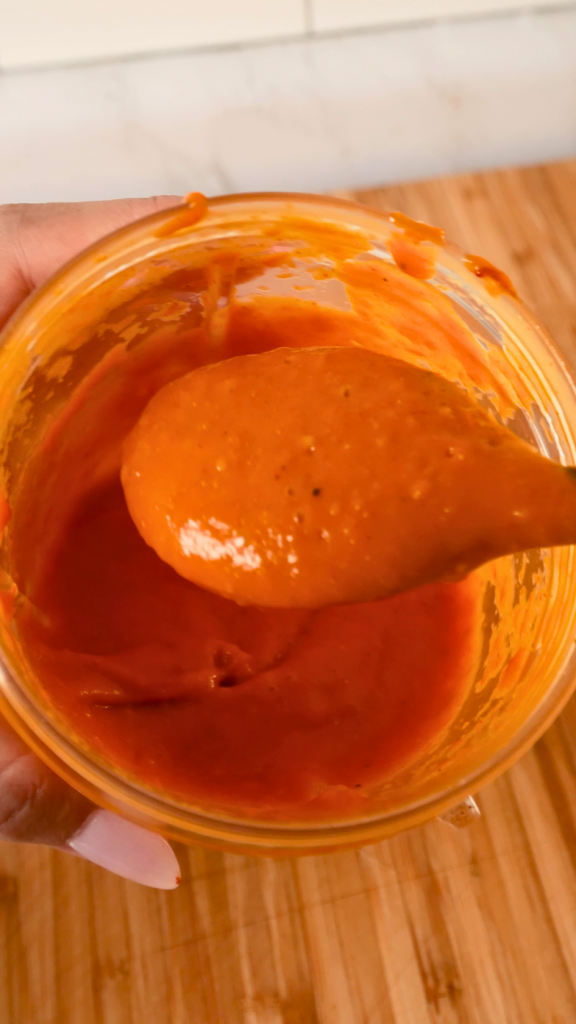
When the tomatoes are ready, carefully transfer them (including the pan juices) into a blender. Add gochujang and sugar, and blend until smooth. The consistency should be thick like pasta sauce.
Step 5: Cook the shrimp
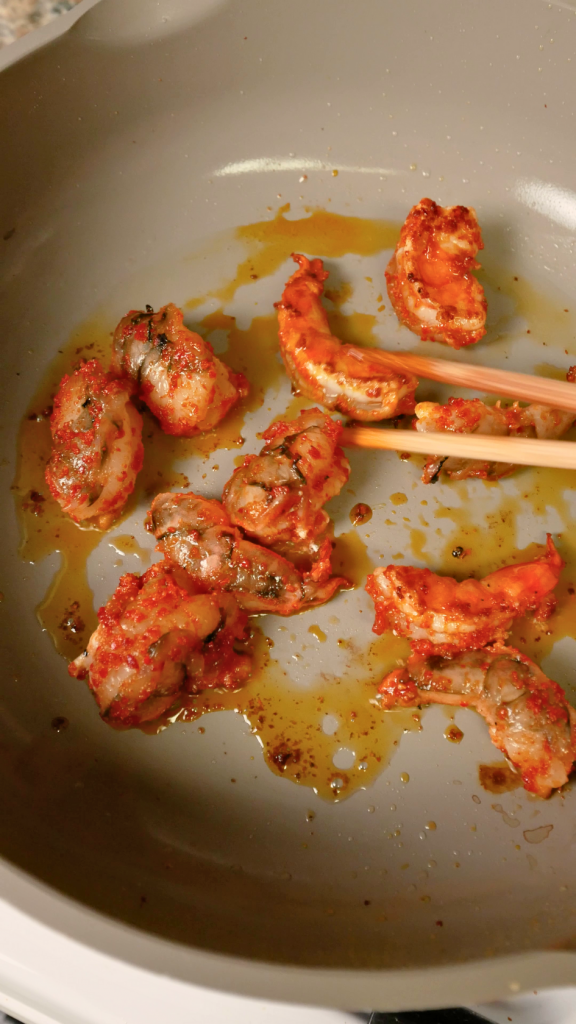
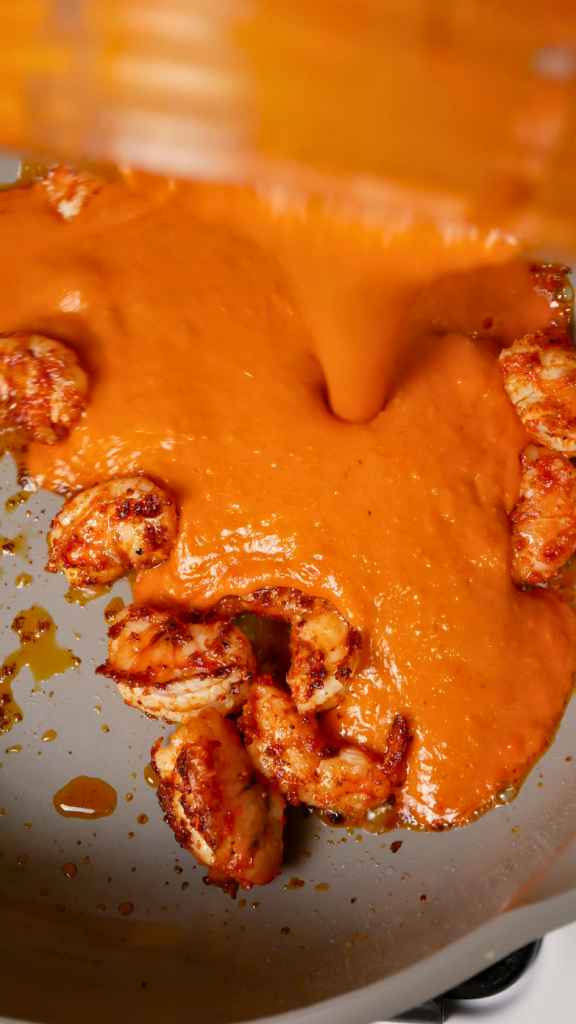
In a pan, heat the remaining tablespoon of oil over medium heat. Add the shrimp and sear on both sides for about 1 minute each. When they’re about halfway ready, add the sauce.
Step 6: Add the pasta

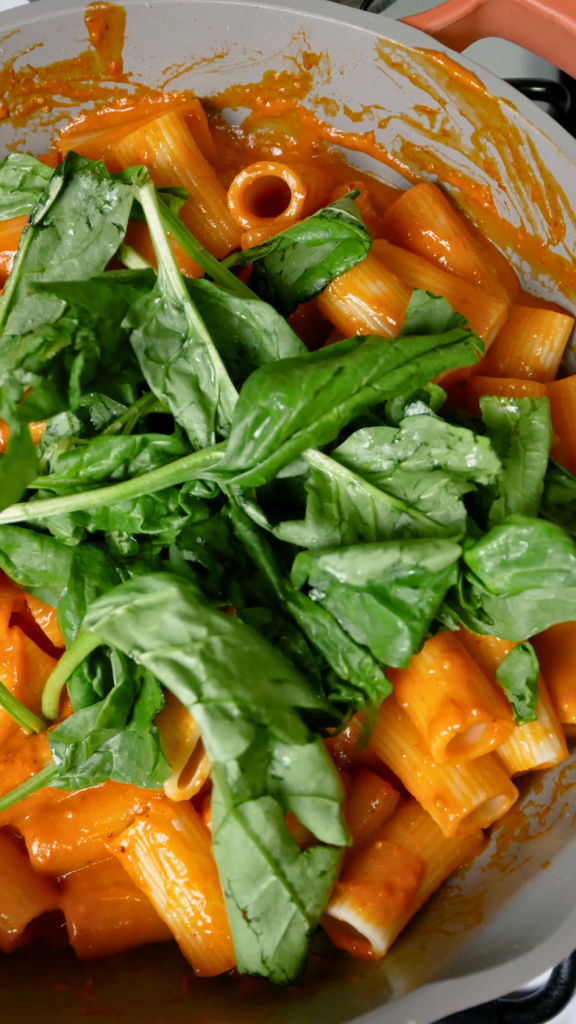
Toss in the cooked pasta and spinach and cook until the spinach wilts. Don’t forget to taste and adjust the seasonings if needed.
Step 7: Garnish and serve
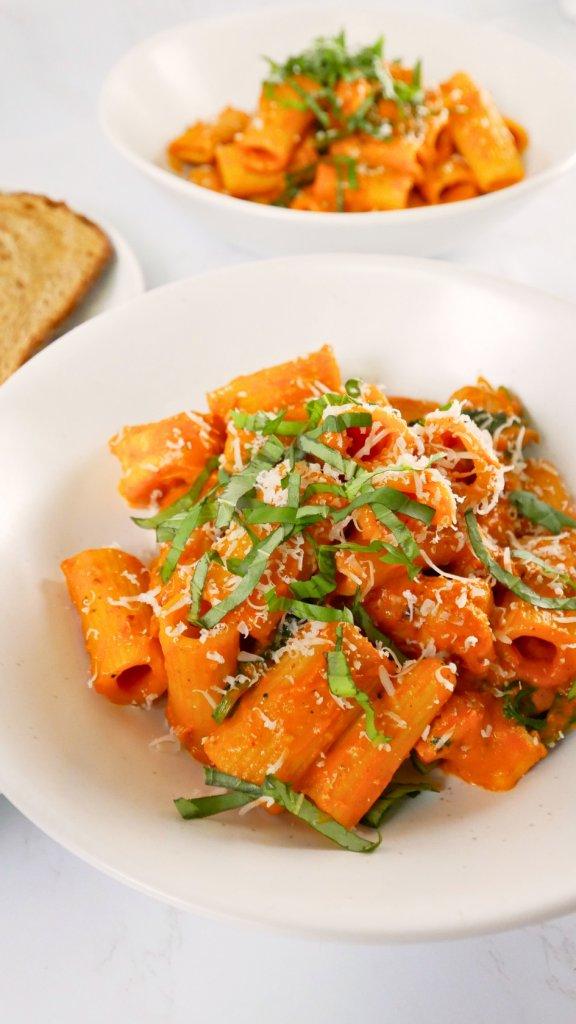

Once you’re satisfied with the taste, transfer the pasta to a plate. Garnish with a generous amount of basil and parmesan cheese. Serve and enjoy!
Cooking Tips for Gochujang Pasta
This recipe is relatively straightforward to prepare. But to make the most delicious gochujang pasta recipe every time, here are a few tips you can keep in mind:
- Since tomatoes are the base of the sauce, their quality will affect the taste of the dish, so I highly recommend using fresh and good quality ones.
- If you’re using bigger tomatoes for the sauce, you’ll have to adjust the cooking time since they will take longer to roast than smaller ones.
- I recommend cooking the pasta a minute before the recommended cooking time for al dente since it will continue cooking in the sauce.
- To adjust the amount of spiciness in the dish, either reduce or increase the amount of chili peppers added before roasting.
- You can also add a small knob of butter to finish the sauce so it’s glossier and more flavorful.
- If you are in a pinch but still want to make this recipe, you can take pre-made bottled tomato sauce and mix in the gochujang and sugar.
Frequently Asked Questions
What is gochujang?
Gochujang is a type of Korean fermented paste that’s made from dried ground chilies and glutinous rice, barley malt powder, fermented soybean powder, and salt. It has a deep red color and a combination of spicy, sweet, and funky flavors. Aside from flavoring pasta sauces, it’s also often used in Korean stews, soups, marinades, and dressings and is a Korean pantry staple!
Why do you roast the tomatoes for the sauce?
Roasting the tomatoes will enhance their flavors and also draw out their natural sweetness. When the tomatoes are roasted, their natural sugars get caramelized resulting in them tasting sweeter. It also evaporates some of their natural liquid resulting in a more concentrated tomato flavor. Roasting the garlic cloves and chili pepper along with the tomatoes also intensifies their flavor and aroma, so you can get a more flavorful sauce for the pasta!
How do you pick tomatoes for the sauce?
Good quality cherry or grape tomatoes should have smooth skin and plump bodies. Ripe ones should have a bright to deep red color with a natural shine. But stay away from tomatoes that have bruised skin, mushy bodies, and an off-smell as these are signs of spoilage.
How do you devein shrimp?
Once you remove its shell, use a small knife to cut a shallow incision on the back of the shrimp. Remove the black vein with the tip of the knife and discard. Repeat the steps for the rest of the shrimp. Then, wash them with water after cleaning them.
Can you store & reheat Gochujang Pasta?
Yes, you can store leftover gochujang pasta in the fridge for up to 2 to 3 days. Make sure to keep it in an airtight container in the fridge so it stays fresher for longer. To reheat, heat it over the stovetop or in the microwave for 1 to 2 minutes, or until thoroughly hot.
Looking for more quick & easy pasta recipes?
Check out these recipes for more delicious pasta night ideas:
1. Uni Pasta – if you want to impress someone special, keep this recipe in your back pocket. The uni makes the sauce taste luxurious and rich. It’s a restaurant-quality dish without the restaurant price tag.
2. Kimchi Alfredo – who knew you could jazz up this classic recipe by adding kimchi to the sauce? It’s the perfect balance of spicy and creamy – a delicious indulgent meal!
3. Roasted Red Pepper Shrimp Pasta – this pasta recipe is a quick and easy way to sneak in your veggies. The sauce contains roasted red peppers, gochujang, and shrimp for a blend of savory and spicy to tickle your taste buds.
4. Vegan Sausage Pasta – if you’re looking for a vegan pasta option, this recipe is for you. You’ll hardly believe this indulgent pasta dish is made with plant-based ingredients from the luscious cashew cream sauce to the savory vegan sausage!
5. Mentaiko Pasta (Spicy Pollock Roe) – if you’re in the mood for exploring new flavors, you have to start with this recipe. It’s made from simple ingredients that allow the spicy, savory, and umami flavors of the mentaiko to completely shine.
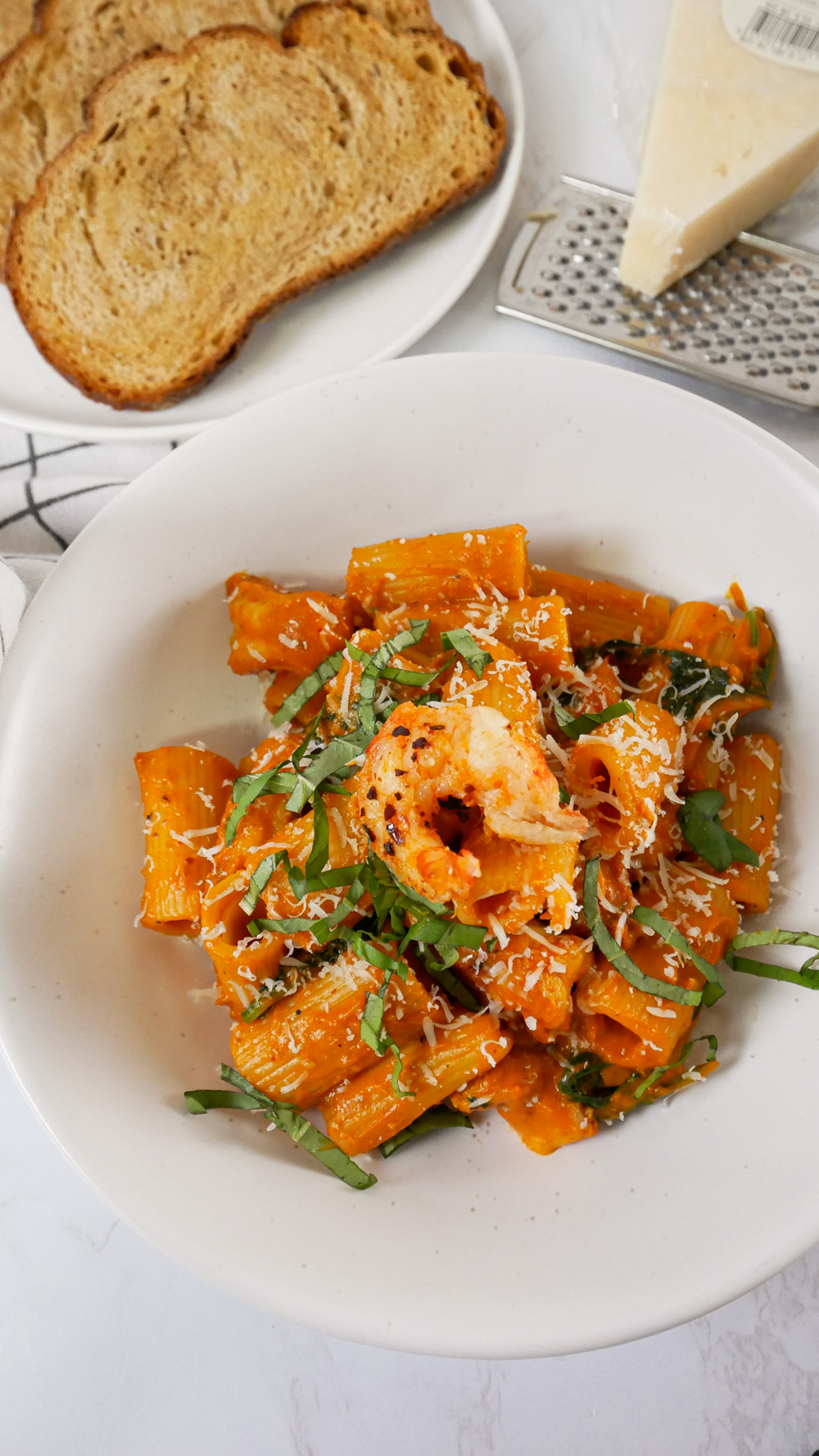
Spicy Gochujang Pasta Recipe (with Shrimp)
Ingredients
- 2 pints (20 oz) cherry or grape tomatoes
- 5 garlic cloves
- 1 chili pepper
- 3 tbsp olive oil divided
- 1/2 tsp salt
- 1/8 tsp ground black pepper
- 1 tbsp gochujang
- 1 tbsp sugar
- 6 oz cooked pasta
- 1/2 cup spinach or your favorite greens
- basil for garnish
- grated parmesan cheese, for garnish
Shrimp Marinade
- 8 oz shrimp peeled and deveined
- 1 tbsp olive oil
- 1/2 tsp salt
- 1/2 tsp gochugaru Korean red pepper flakes
- 1/2 tsp onion powder
- 1/2 tsp garlic powder
- 1/8 tsp ground black pepper
Instructions
- Preheat your oven to 450F/230C. Toss the tomatoes, garlic, chili pepper with olive oil, salt and pepper. Roast in the oven for 30 minutes or until the tomatoes have blistered and softened up.
- While the tomatoes are roasted, prep the shrimp. Peel and devein the shrimp and depending on the size, cut them into smaller chunks.
- Season the shrimp with 2 tbsp olive oil, salt, gochugaru, onion powder, garlic powder, and ground black pepper. Mix together and set aside.
- When the tomatoes are ready, carefully transfer them (including the pan juices) into a blender. Add gochujang and sugar, and blend until smooth. The consistency should be thick like a pasta sauce.
- In a pan, heat the remaining tbsp of oil and add the shrimp. Cook about halfway through then add the sauce.
- Toss in the cooked pasta and spinach and cook until the spinach has wilted. Taste and adjust the seasoning if needed.
- Garnish with basil and parmesan cheese. Enjoy!
Video
Pin & save this recipe for later!
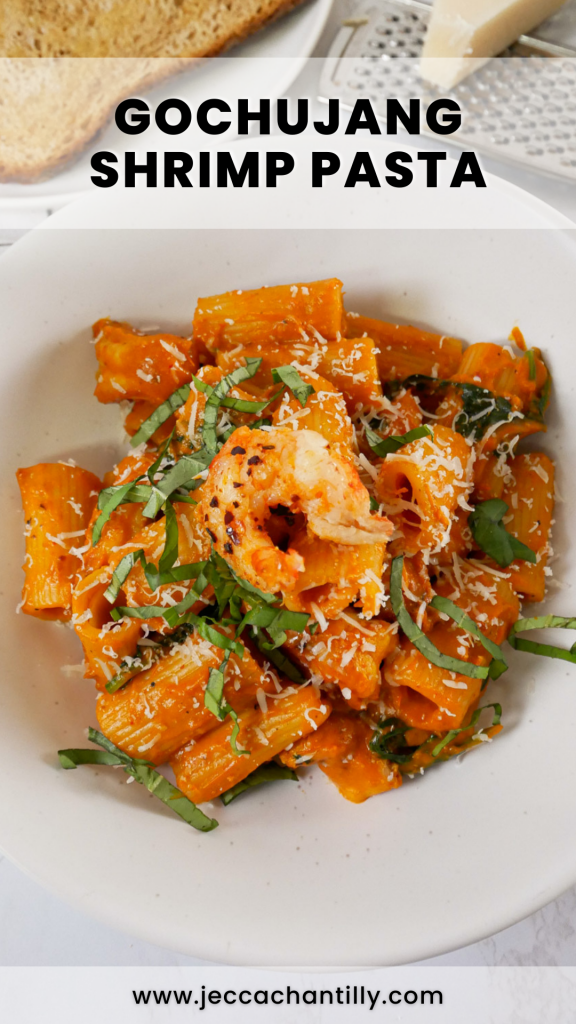
I made this for my wife and kids tonight. Everyone loved it!! That sauce was soooo delicious. I might make it in large batches, just to have some on hand for other recipes, too. Yum!
Hi Ryan! I’m so happy you and the family enjoyed this one 🙂
Delicious recipe! I made it for dinner tonight. My wife and kids loved it. That sauce is so good! I think I’ll make it in bulk and put it in the freezer so I always have some on hand. It’d be tasty on chicken and other vegetables, too.
Hi Ryan, Glad to hear that your family loved it! This sauce is great to store in the freezer for a quick and easy lunch or dinner. It’s great with chicken, shrimp, spinach, mushrooms – essentially everything!